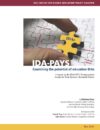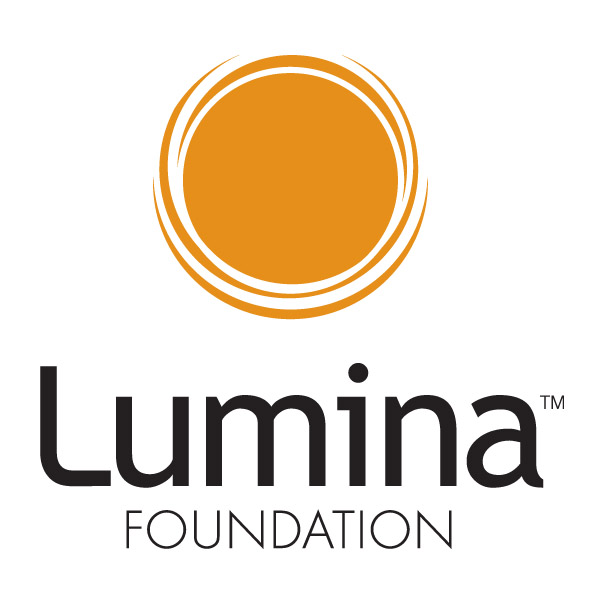Final Report | Other Publications | Research Team | Background | Research Objectives | Design & Method | Funder
Final Report

Examining the Potential of Education IDAs
Adrianna Kezar (2009)
Pullias Center for Higher Education
The overarching goal for this project was to examine the potential for increasing Individual Development Accounts (IDAs) use for educational purposes and to explore higher education’s involvement with IDAs, as well as the potential for greater participation. The three main objectives for the project were to: 1) describe and understand current education IDA initiatives, particularly those with postsecondary involvement and partnerships; 2) examine the potential of IDAs for increasing access to education for low-income students; and, 3) explore challenges to and facilitators of growth and expansion of education IDAs and involvement of the postsecondary sector.
Categories: College Access
adrianna kezar college access college access and success
Download 1.46 MB 2909 Downloads
Other Publications
Annotated Bibliography: Perspectives in Individual Development Accounts
A summary of some key references we found to be helpful during our research project
Analysis and Insights from Nonprofit practitioners working with Education IDAs
A summary of our conversations with practitioners offering IDAs
Strategies for IDA practitioners to create Partnerships with Postsecondary Institutions
A paper to assist nonprofit practitioners who are interested in creating partnerships with postsecondary institutions
IDAs and Financial Aid: Understanding the Puzzle and Sharing Best Practices
A description of how IDAs are handled in the financial aid process
New strategies in delivering education IDAs: Rethinking program design
A paper that reviews program design considerations when offering education IDAs
Institutional Policy Brief: Financial Education in TRIO Programs
An institutional policy brief on financial education in TRIO programs
Research Team
Adrianna Kezar
Director
Vikki Frank
Executive Director, Credit Builders Alliance
Jaime Lester
Assistant Professor, George Mason University
Hannah Yang
Research Associate, Pullias Center
Background
We have all become familiar with the increasing financial costs to attending higher education, and the mounting debt loads students are expected to acquire. Grant aid has failed to keep pace with family and student’s financial need as federal support for grants and subsidized loans have been sharp decline over the past two decades. The possibility that government will again provide large numbers of need-based scholarships is becoming increasingly unlikely. Unfortunately, this situation impacts low and moderate income families the most. Educational leaders need to look for alternative solutions for low-income students.
IDA-PAYS: Postsecondary Access for Your Success was a research project that addressed this challenge by bridging two worlds—postsecondary education and the non-profits that offer IDAs—and exploring how together they can help low-income students enroll in and stay in higher education. The project provided tools for IDA practitioners who wanted to partner with postsecondary institutions to offer education IDAs. In addition, this project helped educational leaders identify ways to work with community agencies to provide more support for low income students.
So, what are IDAs and what do IDAs have to do with postsecondary education? IDAs are matched savings accounts that may be state, federally and/or privately supported. An IDA is a financial tool to encourage low-income families to save towards and acquire an appreciating asset, such as homeownership, entrepreneurship and post-secondary education. IDAs were introduced by Michael Sherraden at the Center for Social Development who suggested that a lack of assets, not just income, keeps the poor in a cycle of poverty. Over the years, his research and that of others has shown that poor families can save and build assets if provided institutional supports parallel to incentives available to middle and upper class families—supports like 401Ks that provide employer-match and tax incentives. IDAs took on national recognition when congress funded the American Dream Demonstration through the Assets for Independence Act of 1998. In 2005, CFED estimated that there are between 500 and 1,000 IDA initiatives nationwide.
Organizations that offer IDAs often couple the match incentive with financial literacy education, training to acquire the asset, and critical case management. IDAs expansion can advance access and success in postsecondary education in important ways. Therefore, IDAs offer the promise of not just scholarship funds, but the opportunity to foster critical new life skills and behaviors with respect to financial management, credit and debt—skills that are crucial to the financial independence of student graduates and working adults. In this way, IDAs lead to lifetime habits of goal-setting, saving, financial management, and asset building that can break the cycle of poverty.
Research Objectives
The overarching goal for this project was to increase IDA use for educational purposes and to increase higher education’s involvement with IDAs. The project had three objectives:
- Describe and understand current education IDAs initiatives, particularly those with postsecondary involvement and partnerships.
- Examine the potential of IDAs for increasing access to education for low-income students.
- Explore challenges to and facilitators of growth and expansion of education IDAs and involvement of the postsecondary sector
Research Design and Method
There were three main activities in order to meet the objectives outlined:
- The research team conducted interviews with IDA practitioners
- We used data from the descriptive interview studies to identify 6 educational IDA initiatives for case study analysis. Because there were no scalable models that included postsecondary institutions and few deep examples of collaboration for us to study, we initiated 2 action sites.
- We conducted a series of focus groups with leaders in the IDA Initiative, higher education, and philanthropic communities.
Interviews
We identified all IDA practitioners in the country who offer education IDAs and who partner with postsecondary institutions to offer IDAs. We interviewed the entire population of approximately 50 individuals. This first phase of the research was aimed at understanding current educationally-oriented IDAs offered across the country and any partnership efforts underway with postsecondary institutions. In addition to interviewing IDA practitioners, we conducted 15 interviews with education leaders and policymakers to develop an understanding of their impression of IDAs before we moved to the case study and focus group work, which helped to design the next phases of research.
Case Studies
We examined three cases that we believed might serve as models for expansion and three that face common challenges in greater depth in order to develop detailed models for expanding programs and for overcoming challenges. Most of the case study sites contained multiple partnerships so, in total, we studied 26 partnerships. The case studies examined a variety of issues that can impact promising practices ranging from policies, structures, culture and climate issues, and politics. We wanted to understand what conditions had been helpful in moving the partnerships forward and what issues emerged that made partnerships slow down or fail in order to provide advice for making partnerships between these groups more fruitful. We had a mix of rural and urban sites; youth and adult IDAs; and each site had a different size nonprofit, with a unique mission, varying approach to education IDAs, and different partnership arrangements. Through these variations we hoped to examine how any of these program variations impacted the success of partnering or program design.
Action Case Sites
We provided technical assistance to Community And Shelter Assistance Corp. of Oregon (CASA) to develop and implement a plan for offering a statewide IDA initiative. We helped them to get memorandum of understanding in place with a set of postsecondary institutions. We hoped to better understand the potential of scalable and statewide models through our work with CASA. We also initiated an action case with the Foundation for Independent Higher Education (FIHE), a national nonprofit organization that supports private higher education. We worked with them to gain support among their state officers to develop an AFI application. This provided us the opportunity to follow a national model where the back-office work would be offered through the Washington, DC office and the local work would be administered through the state representatives and their local colleges.
Focus groups
We conducted 13 focus groups with leaders in the IDA Initiative, higher education, and philanthropic communities. The purpose of the focus groups was to examine the potential of education IDAs, particularly understanding postsecondary leaders views on the value and possibilities of IDAs, approaches to implementation, and ways to partner. We also probed for challenges and possible models for overcoming identified challenges. Lastly, we presented data from our interviews and case studies to obtain feedback on ways to address current challenges and expand educational IDAs through education partnerships.
Advisory Board
Sandy Baum, Senior Policy Analyst, The College Board
Ann S. Coles, Senior Advisor, College Access Programs, TERI
Inger Giuffrida, Director, Assets Alliance
Tim Christensen, Consultant, College Access and Success
Patricia McDonough, Professor, University of California, Los Angeles
Arnold Mitchem, President, Council for Opportunity in Education
Kimberly Pate, Vice President, Strategic Partnerships & Business Dev., CFED
Leslie Parrish, Senior Researcher, Center for Responsible Lending
Jill Wohlford, Senior Knowledge Mgmt & Program Officer, Lumina Foundation for Education
Woody Widrow, Executive Director, RAISE Texas
Funder
 This project is funded by a three-year, $530,000 grant from Lumina Foundation for Education, an Indianapolis-based private foundation that strives to help people achieve their potential by expanding access to and success in education beyond high school.
This project is funded by a three-year, $530,000 grant from Lumina Foundation for Education, an Indianapolis-based private foundation that strives to help people achieve their potential by expanding access to and success in education beyond high school.
